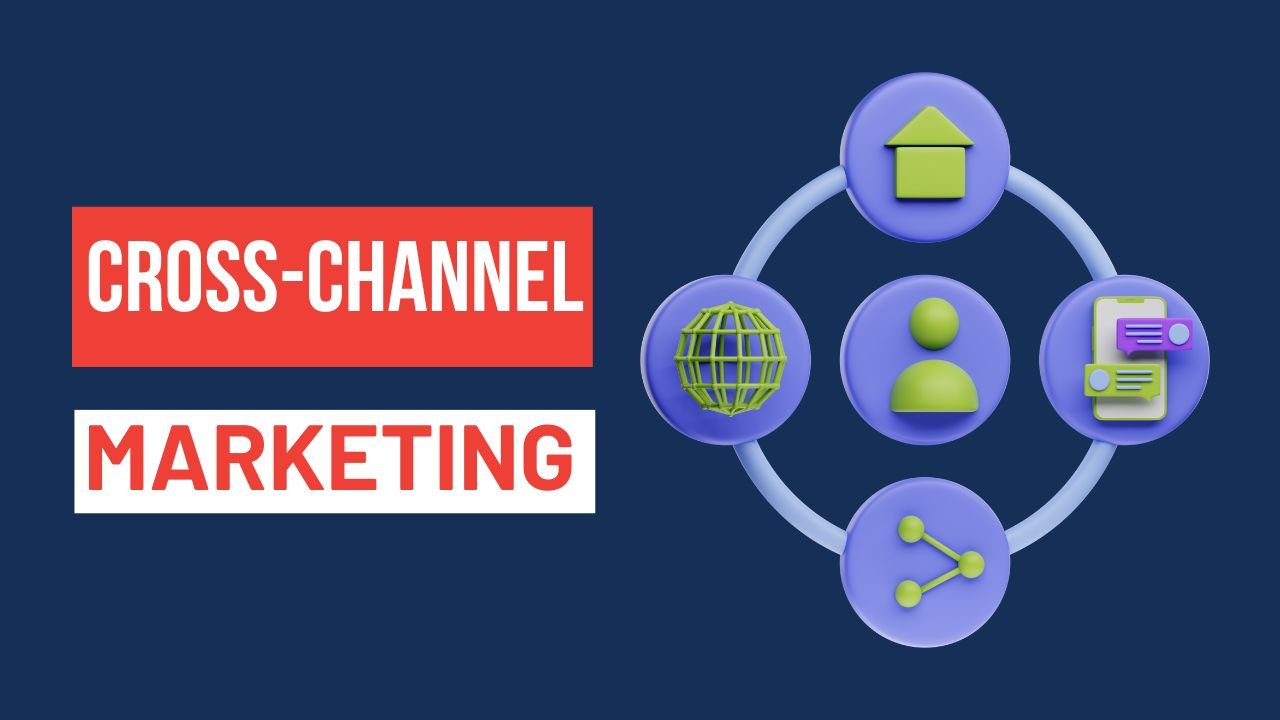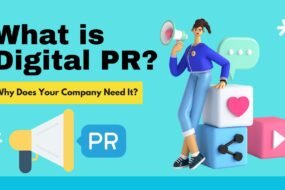
Are you finding it hard to create a smooth customer experience as they move between your website, social media, and email campaigns? This is a common challenge that cross channel marketing can solve. In this guide, we will show you the essential strategies to build an effective cross-channel marketing plan for 2025.
We will also talk about real-world examples from brands that successfully connect their marketing efforts. By the end of this article, you will know how to bring all your channels together into a streamlined strategy that not only reaches your audience but also keeps them coming back. Let’s get started.
What Is Cross-Channel Marketing?
Cross-channel marketing is a strategy that integrates multiple marketing channels to provide a seamless and consistent customer experience. Instead of working in isolation, social media, email, websites, and physical stores are interconnected, so that brands can interact with customers at different touch points cohesively.
For example, a customer might first discover a product through an Instagram ad, receive a follow-up email, and finally purchase it on the brand’s website. Cross-channel marketing ensures that each interaction feels part of a unified journey, with consistent messaging and a personalized approach based on the customer’s behavior and preferences.
Why You Should Use Cross-Channel Marketing In 2025
In 2025, your customers expect a seamless experience wherever they interact with your brand, whether. If you are not meeting them across these channels, you’re likely losing out. Here’s why cross-channel marketing is a game-changer for your business.
i. Reach Customers Where They Are
Your customers use an average of 6 different touchpoints before making a purchase decision. Adopt a cross-channel marketing strategy to reach them at every point.
Imagine a customer who discovers your product through an Instagram ad, gets a follow-up email with a discount, and then sees a reminder on Google. These coordinated interactions significantly increase the chances of conversion. In fact, companies that implement multi-channel marketing see a 287% higher purchase rate than those that don’t.
ii. Boost Engagement With Personalization
Customers crave personalized experiences. 72% of consumers only engage with marketing messages tailored to their interests. Cross-channel marketing lets you gather data from different touch points so you can create targeted messages that resonate.
For instance, if a customer views a product on your website but doesn’t buy, you can send a follow-up email or display a personalized ad on social media to nudge them to complete the purchase.
iii. Improve Customer Retention & Loyalty
It costs 5-7 times more to attract a new customer than to keep an existing one. Cross-channel marketing helps you build strong relationships by maintaining consistent communication and a unified brand message.
When customers feel valued across every interaction, they are more likely to return and recommend your brand to others. Businesses using omnichannel marketing see a 91% higher customer retention rate compared to those that don’t.
iv. Optimize The Customer Journey For More Conversions
Customers don’t just stick to one channel; they bounce between them before making a decision. Cross-channel marketing lets you optimize this journey at every stage. For example, if a customer abandons their cart on your website, you can send a reminder email with a discount or show them a retargeted ad on social media.
7 Steps To Build A Successful Cross-Channel Marketing Campaign
As you go through these steps, focus on Step 3: Choosing the Right Channels. It’s a common stumbling block, but picking the right platforms is key to your marketing campaign’s success. Let’s get started.
Step 1: Know Your Audience Inside Out
To craft a campaign that resonates, start by getting to know your target audience. Use Google Analytics, social media insights, and customer surveys to learn who they are, what they care about, and how they interact with your brand.
How To Do It:
- Dive into your data: Look at your website analytics to see which pages get the most visits and which products are most popular. This tells you what your audience is interested in.
- Survey your customers: Ask them directly. A simple survey can reveal their preferred channels (email, social media, SMS) and the types of content they enjoy (videos, articles, infographics).
- Create customer personas: Use this information to build profiles of your ideal customers. For example, you might find that one group prefers Instagram for discovering products, while another relies on email for exclusive deals. These personas guide your messaging for each channel.
If you need help with this process, consider hiring a marketing analyst. They will handle data analysis, customer surveys, and persona building to identify the right channels and content. This way, you gain valuable insights to improve your marketing strategy while freeing up your time to focus on more important tasks.
Step 2: Set Clear Goals For Your Campaign
Without clear goals, it’s hard to know if your campaign is working. Are you aiming to boost sales, grow your social media following, or drive traffic to your website? Be specific about what you want to achieve.
How To Do It:
- Choose measurable objectives: For example, instead of saying, “I want more sales,” aim for something specific like, “Increase online sales by 20% in the next 3 months.”
- Break it down: Set smaller goals for each channel. If email marketing is part of your campaign, a goal might be, to “Get a 10% higher click-through rate on our promotional emails.”
- Align your goals: Make sure each channel’s goal fits into your overall objective. If your main goal is brand awareness, your social media content should focus on telling your brand story, while your email campaigns introduce new products.
Step 3: Choose The Right Channels
It’s tempting to be everywhere, but spreading yourself too thin won’t give you the results you want. Instead, choose the channels where your audience is most active.
For example, a physical store like Whole Foods might use Instagram and Pinterest to show off fresh products, recipes, and in-store events. They can also use Google My Business to attract local shoppers.
A virtual store like Green Supply, however, can make the most of Facebook and Instagram for product ads and promotions. They can also use email marketing to keep customers informed about new products and special discounts.
How To Do It:
- Refer to your customer personas: If you know your audience spends most of their time on Instagram and TikTok, focus your efforts there.
- Test different channels: Run small campaigns on a few platforms and see what works best. For example, if you are not sure about email, start with a simple newsletter to gauge interest.
- Prioritize quality: It’s better to have strong, engaging content on three channels than to post mediocre content across 6. Pick a manageable number of channels to start, and you can always expand later.
Step 4: Create Consistent Yet Adaptable Content
Your message should feel the same across all channels, but how you present it will vary depending on the platform. Consistency builds brand recognition, while adaptation ensures you’re using each channel effectively.
Evergreen content, like blog posts and videos, can be a powerful tool here. When you promote this content across different marketing channels, it continues to attract traffic and engage customers over time. Besides, this ongoing engagement helps generate passive income, as the content works automatically to drive leads and sales long after it’s created.
How To Do It:
- Craft a core message: Decide on the key message you want to convey in this campaign. For example, if you’re launching a new product, your message might be, “Experience the next level of comfort with our latest product.”
- Tailor content for each channel: Use your core message as a foundation. For social media, create short, eye-catching visuals and videos. For email, write a more detailed story or offer. You can consult a design agency to create tailored visuals and graphics that fit each platform’s style and audience.
- Use a content calendar: Plan your content for each channel. Include the type of content (video, blog post, infographic) and the date and time it will be published. This keeps your campaign organized and ensures a steady flow of communication with your audience.
Step 5: Integrate Your Marketing Tools
Cross-channel marketing works best when your tools are connected. Integration helps you track customer interactions and ensures your messaging is consistent.
How To Do It:
- Use a CRM (Customer Relationship Management) system: CRM systems like HubSpot or Salesforce collect and store customer data from different channels in one place. This lets you see where each customer is in their journey and send personalized messages based on their behavior.
- Automate where possible: Use Mailchimp for email campaigns or Hootsuite for social media scheduling. Automation ensures timely and consistent communication, even across multiple platforms.
- Sync your tools: Many CRM and marketing platforms integrate with each other. Connect your email, social media, and analytics tools so they share data. For instance, linking your email marketing software to your CRM helps track which customers opened an email, clicked a link, or purchased.
Step 6: Monitor & Optimize Performance
Your campaign doesn’t end when you hit “publish.” You need to monitor its performance and make adjustments to keep it on track.
How To Do It:
- Set up tracking: Use Google Analytics to track website traffic, social media analytics to monitor engagement, and email metrics like open and click-through rates. This gives you a complete view of how your campaign is performing.
- Test and tweak: Run A/B tests on your content to see what works best. For example, try two different email subject lines and see which gets a higher open rate. Adjust your messaging, visuals, and timing based on what the data shows.
- Review regularly: Set a schedule to review your campaign’s performance, like once a week. Identify what’s working and what’s not. If one channel is underperforming, consider reallocating your efforts to a channel with better engagement.
Step 7: Provide a Seamless Customer Journey
Your goal is to guide customers smoothly from one channel to the next, making their experience with your brand feel natural and connected.
How To Do It:
- Create a step-by-step flow: Map out the customer journey. For instance, they might see an Instagram ad, click on your website, browse products, and then receive a follow-up email with a discount. Plan each step so customers know what to expect next.
- Simplify transitions: Make it easy for customers to move between channels. For example, include direct links in your social media posts that take them to specific product pages, or use QR codes in physical locations that lead to your online store.
- Personalize each interaction: Use the data you gathered to personalize messages. If a customer abandons their cart, send a reminder email offering a small discount or free shipping. Personal touches make the journey feel tailored to them, increasing the chances they will come back and complete the purchase.
3 Common Cross-Channel Marketing Challenges & How To Overcome Them
Cross-channel marketing can significantly boost customer engagement and sales, but it comes with its fair share of challenges. Here’s how to tackle the most common obstacles and keep an effective cross-channel marketing approach.
A. Data Silos: Fragmented Customer Information
When data from different channels (social media, email, website) is stored separately, it becomes challenging to get a complete view of your customer. This fragmentation causes disjointed messaging and missed opportunities for personalized interactions.
How To Overcome It:
- Use a Unified CRM System: A Customer Relationship Management (CRM) system like HubSpot or Salesforce consolidates data from all your marketing channels in one place. This unified view lets you track customer interactions across channels and understand their journey better.
- Integrate Your Tools: Ensure your marketing tools (email platforms, social media schedulers, website analytics) are integrated with your CRM. Most modern tools offer built-in integrations or can be connected using services like Zapier. This integration enables data sharing between platforms, breaking down silos and providing a comprehensive picture of each customer.
- Regular Data Audits: Perform data audits regularly to identify gaps and inconsistencies. For example, ensure that customer contact details and purchase history are up-to-date across all systems. This helps maintain accurate and actionable data to create more targeted cross-channel marketing campaigns.
B. Inconsistent Customer Experience Across Channels
Maintaining a consistent brand message and experience across multiple channels can be tough. Customers might encounter conflicting messages, which can confuse them or make your brand seem less trustworthy.
How To Overcome It:
- Create A Brand Voice Guide: Develop a brand voice guide that outlines your brand’s tone, language, and messaging for different situations. Share this guide with everyone involved in your marketing efforts, so whether it’s a social media post, an email, or a blog article, the messaging feels cohesive.
- Centralize Content Planning: Use a content calendar to plan your marketing activities across all channels. This lets you align promotions, announcements, and campaigns so that customers receive the same message wherever they interact with your brand. For instance, if you are launching a new product, coordinate posts, emails, and ads to communicate the same information at the right times.
- Use Cross-Channel Automation: Marketing automation tools can help you deliver consistent messaging because you can set up workflows that automatically trigger actions across different channels. For example, when a customer signs up for your newsletter, they can receive a welcome email, followed by targeted ads on social media, all reflecting the same core message.
C. Resource Allocation & Budget Management
Allocating resources (time, money, and team efforts) effectively across various channels can be difficult. You might end up overspending on channels that don’t yield results while neglecting the more promising ones.
How To Overcome It:
- Start Small & Scale: Begin with a few key channels that align with your audience and campaign goals. For example, if your audience is highly active on Instagram and email, focus on these 2 first. Track their performance and gradually expand to other channels based on the results.
- Use Analytics For Informed Decisions: Rely on data to decide where to allocate your budget. If analytics show that your Facebook ads generate higher ROI than other channels, consider diverting more funds there. Review your spending and outcomes weekly for an effective marketing strategy.
- Leverage Automation: Use marketing automation tools to reduce the manual workload. Automation not only saves time but also ensures consistency in your messaging. For instance, automate email follow-ups or social media posts to keep your audience engaged without stretching your resources too thin.
2 Best Cross-Channel Marketing Examples
As you read through these examples, pay close attention to how these brands integrate traditional and digital marketing efforts, and how they use customer data to personalize the experience.
a. M&M’s: Super Bowl Meets Social Media
M&M’s amplified their cross-channel marketing efforts by combining a traditional Super Bowl ad with an engaging digital campaign to boost their reach and engagement.
How They Do It:
- Super Bowl Commercial: M&M’s aired their “Come Together” ad during Super Bowl LV, one of the most-watched TV events of the year. This created a massive initial exposure.
- Social Media Teasers: Before the ad aired, M&M’s built anticipation by sharing teasers across platforms like Twitter and Instagram, using hashtags like #MMSTogether to engage their audience. This helped to extend the ad’s visibility beyond TV.
- Post-Ad Engagement: After the Super Bowl, M&M’s continued the conversation on social media by posting reactions, clips from the ad, and even hosting sweepstakes that invited users to share their own stories for a chance to win prizes.
- Interactive Zoom Call: To further engage fans, they offered a unique opportunity to join a Zoom call with one of their characters, adding an interactive element to their campaign.
What You Can Learn:
Extend the reach of your traditional campaigns by integrating them with digital channels. Use social media to tease content before a big event and keep the conversation going after. Offer interactive elements like sweepstakes or live sessions to deepen engagement and make your campaign more memorable.
b. Starbucks: Seamless Loyalty Program Integration
Starbucks mastered multichannel marketing by integrating its loyalty program across its app, website, and physical stores, creating a unified experience for its customers.
How They Do It:
- Mobile App: Starbucks’ mobile app lets customers order ahead, pay, and collect rewards. When customers purchase using the app, they earn loyalty points, which they can track in real-time.
- Email & Push Notifications: The app integrates with email marketing, sending personalized offers and promotions based on customers’ past purchases. Customers also receive push notifications about new products, discounts, or reminders to use their loyalty points.
- In-Store Experience: When customers visit a Starbucks store, they can scan their app to earn points, redeem rewards, and view personalized offers. This connection between digital and physical channels keeps customers engaged and incentivized to return.
What You Can Learn:
Make it easy for customers to switch between online and in-store experiences. If you have a physical location, let customers use your app or website to browse products, place orders, or redeem rewards when they visit in person.
Conclusion
As you start implementing these strategies, ask yourself: When a customer leaves my website without completing a purchase, do my follow-up emails and social media ads feel like part of the same conversation, or do they seem disconnected?
If you need more resources on marketing, sales, & entrepreneurship, check out The Gratified Blog. You will find practical strategies, expert advice, and easy-to-follow guides to help you grow your business. Visit now and learn how to optimize your marketing channels, increase sales, and build a loyal customer base.
Author Bio:
Burkhard Berger is the founder of Novum™. He helps innovative B2B companies implement modern SEO strategies to scale their organic traffic to 1,000,000+ visitors per month. Curious about what your true traffic potential is?
- Author picture: Here
- Gravatar: vip@novumhq.com








No Comments